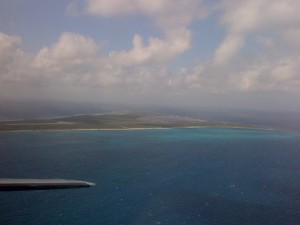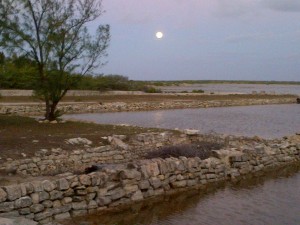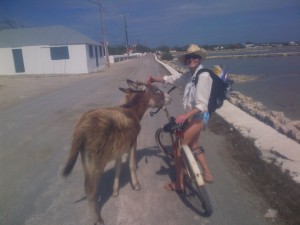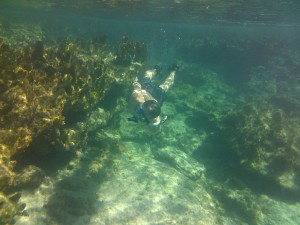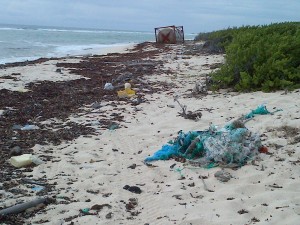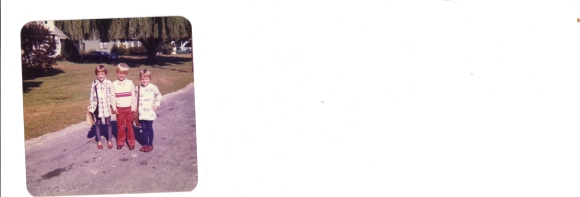We’re 20 miles offshore of Cape Hatteras, SC, an area known as the Graveyard of the Atlantic. There’s only one other sailboat in view, a blue-hulled speedster that’s pulling away from us in the gusty, 15 mph winds. It’s a gray November day with choppy and disorganized swells, rocking our sailboat one way and bouncing it back. It’s thrilling to be sailing aboard Free Spirit again, southbound offshore, yet there are issues.
This is a trip I dream of: beyond a temporary disconnect from everyday life, it’s a hard reset. The vast stretches of open ocean invite my thoughts and imagination to roam without boundaries. There are no jobs to dress for, no phone ringing, and no dusty apartment clutter to distract me. I packed an engrossing novel alongside half-written books waiting for my attention and a notebook for collecting sundry scribbled inspiration. After several days offshore there’s nothing like the feeling of being a mole that comes to the surface, blinking, unaware of what has taken place in the world while it was underground.

Unfortunately another passenger is one I hadn’t anticipated: Elon Musk. Wouldn’t you love to read an article or column that doesn’t mention the billionaire of the moment? Me too. But along with transforming personal transportation and disrupting social media channels, he’s infiltrating my last bastion of peace and solitude: sailing.
When the captain announced that he purchased Starlink I was excited to see how it works. It’s cutting-edge for sailors looking for ways to lengthen their tethers to society. Thanks to Musk’s Starlink system, which the owner of this boat gleefully adopted and installed the day before we left, we can stay connected to the internet via Wi-Fi even when dozens of miles offshore.
Captains looking for crew are advertising their Starlink systems in order to get the upper hand over boats that are not connected. The technology is enabled by thousands of little satellites that pepper the skies. Apparently Musk and the U.S. government have also provided the technology to Ukrainians fighting the Russian invasion. While I was intrigued by Starlink I never imagined I’d be fighting its invasion of my quiet time at sea.
The first impact of the Wi-Fi removed the anticipatory stress of packing and planning. I don’t have to download books to an iPad before traveling, nor do I need to lock in a return ticket home — now I can do all these things from the rocking cockpit of the boat. It allows me to video call my grandchildren to show them the dolphins keeping pace at the bow. Sadly, I’m reporting that Starlink works perfectly along the east coast, even 30 miles offshore. It allows me to procrastinate at sea as well as I do at home.

The uninterrupted connectivity removes one of the last links to the tradition of sailors making a leap into the unknown, crossing vast empty spaces on a sail and a prayer. Starlink’s transformative effect on sailing is underscored by my usual lack of sailing tech. This summer I sailed my own 25-foot sailboat in Rhode Island and to Cape Cod. My boat, Esmeralda, is a low-tech, bare bones vessel, with almost no electronic gadgets at all. In fact, an issue with wiring the boat’s single car-sized battery left me with no FM radio, navigation devices, or lights for most of the summer. I got by just fine with a battery-operated lantern and a phone app for navigating. It made me feel like a purist, closer to traditional sailing.
On this larger (55 foot) sailboat we are surrounded by wind and speed gauges, an auto pilot, satellite communications gear, and computer chart plotter, all standard equipment for sailing hundreds of miles along the coast. The cockpit feels like a NASA control room full of gauges and screens to monitor. But do we also need Elon tagging along? Joshua Slocum is surely turning in his grave.
The captain justifies Starlink as a safety measure. With it he can pore over weather maps and communicate with experts easily, routing around bad weather or staying in port to wait out storms. The boat is his home, he explains, and he doesn’t want to take unnecessary chances. Its primary use is not emergency connections, which we have Iridium and AIS devices for. He said it will help him when he’s on the hook in US ports and the Bahamas, where communications are sketchy and laborious to maintain.
Also, boats this big need constant maintenance. When I applauded the captain for replacing a bad starter engine on his generator he demurred. I’m not that smart, he said, I’m just YouTube smart. Certainly, engine repairs or troubleshooting systems are more easily accomplished with instantly accessible online resources. The alternative is time consuming jury rigging or doing without until reaching a marina office with Wi-Fi. Perhaps Slocum would empathize.



The captain also mentioned, with great amusement, that Starlink’s coverage is so good that another boat’s crew was able to watch the Packers game live while crossing the Gulf Stream toward Bermuda.
So, when that other speedy boat was alongside us, out here in the formerly disconnected and untamed blue ocean, we chatted with them via VHF radio. We asked where they were going and shared recommendations of warm island destinations for riding out the winter. The other sailboat captain confided that he has Starlink so he can continue to work while anchored deep in the Bahamas.
I’m adding my voice to those lamenting that it’s become impossible to be free of screens, email, and corporate expectations anywhere anymore (while simultaneously happy to have Starlink when we get stuck in a coastal harbor waiting out bad weather). The worst part is, during my night watch when I sneak out on deck to gaze at the canopy of twinkling stars above I can’t help wondering which of them is a Starlink satellite.
On the other hand, I can’t help wondering if I can write off the purchase of a system so I can bankroll my explorations by land and by sea next summer..





























![IMG_20190308_114800907[1] IMG_20190308_114800907[1]](https://alisonwriter.files.wordpress.com/2019/03/img_20190308_1148009071.jpg?w=146&resize=146%2C146#038;h=146&crop=1)
![IMG_20190308_115649357[1] IMG_20190308_115649357[1]](https://alisonwriter.files.wordpress.com/2019/03/img_20190308_1156493571.jpg?w=146&resize=146%2C146#038;h=146&crop=1)
![IMG_20190308_120540012[1] IMG_20190308_120540012[1]](https://alisonwriter.files.wordpress.com/2019/03/img_20190308_1205400121.jpg?w=146&resize=146%2C146#038;h=146&crop=1)
![IMG_20190308_120616071[1]](https://alisonwriter.files.wordpress.com/2019/03/img_20190308_1206160711.jpg)







